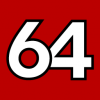-
Posts
12428 -
Joined
-
Last visited
-
Days Won
554
Content Type
Profiles
Forums
Events
Everything posted by Fiery
-

Power Values (Core i7-5930K + Asus Rampage V Extreme)
Fiery replied to tistou77's topic in Hardware monitoring
I'm pretty sure that value is just calculated as: Uncore = Package - DIMM To me that doesn't sound like a proper formula for your CPU... -
I've sent you the requested screen shot in email
-
v1.4 works on iPhone 5 + iOS 6.1.4 for me. The only problem is: it somehow doesn't work well when one interrupts monitoring by e.g. performing in-app purchase. I don't know why, but it simply fails to connect again after then. It says Server Offline, but the server works fine. If I kill the app and start it again, it works. If I go to Settings, press Done button (without altering any settings), I get a blank white screen and it cannot connect back to the server again. Pushing the Home button and then opening the app again doesn't help either. A cosmetic issue: in the Settings the two pair of buttons are not aligned horizontally.
-
Since your BCLK is 100 MHz, and your DRAM frequency is 1333 MHz, 40:3 is the right ratio, so AIDA64 is correct there. CPU-Z is not our software, so I cannot tell why and how it could misinterpret or misdetect the DRAM:BCLK ratio. But I'm sure Franck (the author of CPU-Z) could clarify that, and if necessary, fix CPU-Z. Regards, Fiery
-
HWiNFO and SIV directly control the Corsair Link hardware using the Global\Access_CorsairLink named mutex to synchronise access, however the Corsair Link application does not use this mutex so there are issues when the software collides. We've asked Corsair to provide us with a SDK to let us implement proper support in AIDA64, but they said the current Corsair Link framework is already deprecated, and that a new one with major changes is about to come out. We're still waiting for the new generation of Corsair Link to be released though... Corsair said the new framework will include a SDK that AIDA64 could use to talk to Corsair Link devices, without collision issues. Regards, Fiery
-

Logitech Arx Control LCD for smartphones and tablets
Fiery replied to Grestorn's topic in General Discussion
Replied in the WebDash topic- 71 replies
-
I wanted to try this app, but it says iOS 8.1 or later is required. Above you stated it should work on iOS 7 and up Also, it would be great if you could support iOS 6 devices as well. My iPhone 5 is still running iOS 6, since I personally hate when a major iOS update slows certain functions of the phone down, so I prefer to keep the original iOS the iPhone came out with.
-
AIDA64 doesn't officially support benchmarking a virtual machine. It may or may not work, and it may or may not provide accurate results. Use it only at your own risk Regards, Fiery
-
1) Please right-click on the bottom status bar of AIDA64 main window --> Disk Debug --> SMART Dump. Copy-paste the full results into this topic, or attach the results as a TXT file to your post. 2) Also right-click on the bottom status bar of AIDA64 main window --> Disk Debug --> RAID Dump. Copy-paste the full results into this topic, or attach the results as a TXT file to your post. 3) Also let me know what is the model name of your external drive. Thanks, Fiery
-
I suppose you mean those that would require a special register access mechanism that would risk the system stability due to potential collision with other applications and AI Suite. We try to avoid doing such tricky moves, since it simply isn't worth risking a BSoD or lockup
-
AIDA64 has to be able to detect all available GPUs at its startup for the GPU monitoring features to work. In case the secondary GPU(s) are sleeping when it starts, and the wake option is not enabled, then it will only be able to handle the primary GPU.
-

New cache and memory benchmarks in AIDA64 v3.00
Fiery replied to Fiery's topic in Benchmarking, system performance
When you alter a single memory timing setting, the memory controller may still adjust some other timings automatically, to keep your system stable. L3 cache latency can be improved by increasing the L3 cache clock (uncore clock). -
It depends on both the actual video driver and video card, whether they can provide GPU utilization and temperature readings while at idle, and whether they are able to go to deep sleep when they are being monitored. AIDA64 can only wake the GPUs up at startup, but after then it has no control over the power management behavior of the video hardware.
-
The GPU waking only occurs at AIDA64 startup, and it helps AIDA64 to find all available GPUs in the system. A few seconds after AIDA64 startup, the GPU will go back to sleep again, so the option should have no impact on the power draw of your video card(s) over a long period of time.
-
That's normal, and it's due to the power management features of your video driver. We cannot alter that behavior while AIDA64 is running. Except for its startup when it's possible to get all GPUs wake up, if the option Wake GPUs up at AIDA64 startup option is enabled in AIDA64 / main menu / File / Preferences / Stability.
-
Meanwhile, we've fine-tuned a few bits about your devices, so please try the latest AIDA64 Extreme beta available at: http://www.aida64.com/downloads/latesta64xebeta Let me know if there're still items missing. If that's the case, then please submit a new Aquaero dump Thank you. (We're still waiting for Aqua Computer's response, so that's why things may still be missing or inaccurate)
-
That's an interesting idea indeed. We however currently have a lot of other things on the table, so I cannot promise anything about this particular feature request. Regards, Fiery
-
Yes, that should already work.
-
Those issues are due to bugs in the Strike7 SDK or driver. Please report them to Mad Catz, and hopefully they will fix it up.
-

New cache and memory benchmarks in AIDA64 v3.00
Fiery replied to Fiery's topic in Benchmarking, system performance
You've already got some decent scores there. Usually, the way to improve the scores is using more agressive memory timings, and/or increasing the memory clock, and/or increasing the CPU core clock, and/or increasing the uncore (integrated memory controller block of the CPU) clock. -
Please post a screen shot of the benchmark result for both machines, for both AES and PhotoWorxx. We would like to check what the status bar of AIDA64 main window indicates about the benchmark method used, and the TSC frequency measured. Please also post a shot of the Cache & Memory Benchmark panel results. FYI, memory and cache performance have a big impact on the PhotoWorxx scores, so it would be useful to see if the memory subsystem performs on your Broadwell as expected. Also, on the 5010U system, right-click on the bottom status bar of AIDA64 main window --> CPU Debug --> CPUID & MSR Dump. Copy-paste the full results into this topic. If you prefer to communicate in email, or share screen shots only in email, please send me your email address in private message.
-
It's not easy to directly compare those processors, since the 5010U runs at 300 MHz lower base frequency than the 3110M, and also has a much lower TDP. BTW, are you using AIDA64 v5.00? (latest version) Regards, Fiery
-
AlphaCool LCD support requires the AlphaCool LibUSB drivers to be installed. Just install the AlphaCool software bundle, and it should install the driver too.
-
Thank you for the feedback. The indexing issue is because your CPU may support up to 3 DIMM slots per memory channel
-
Please find the mentioned update to AIDA64 Extreme at: http://www.aida64.com/downloads/latesta64xebeta After upgrading to this new version, make sure to restart Windows to finalize the upgrade. Let me know how it works


